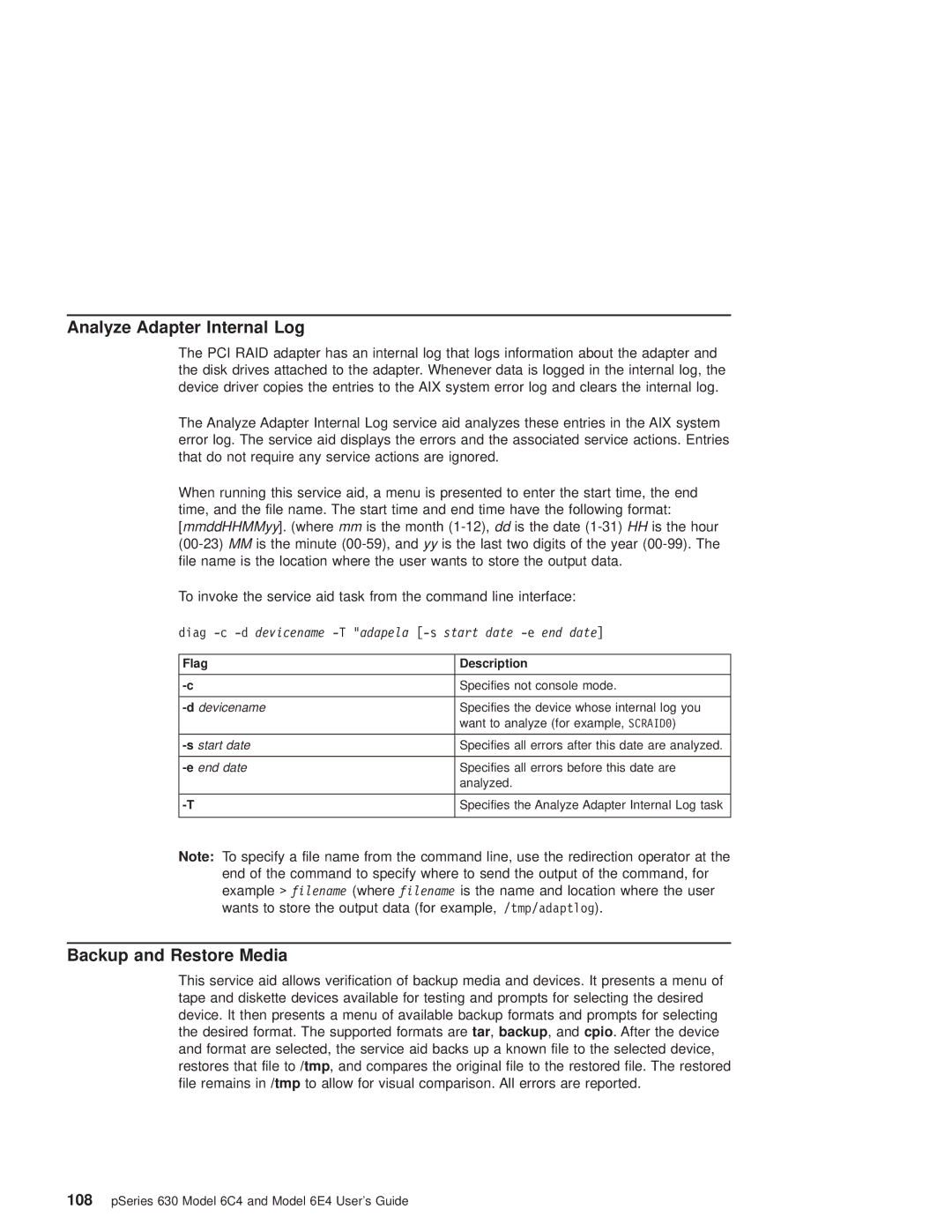
Analyze Adapter Internal Log
The PCI RAID adapter has an internal log that logs information about the adapter and the disk drives attached to the adapter. Whenever data is logged in the internal log, the device driver copies the entries to the AIX system error log and clears the internal log.
The Analyze Adapter Internal Log service aid analyzes these entries in the AIX system error log. The service aid displays the errors and the associated service actions. Entries that do not require any service actions are ignored.
When running this service aid, a menu is presented to enter the start time, the end time, and the file name. The start time and end time have the following format: [mmddHHMMyy]. (where mm is the month
To invoke the service aid task from the command line interface:
diag -c -d devicename -T "adapela [-s start date -e end date]
Flag | Description |
|
|
Specifies not console mode. | |
|
|
Specifies the device whose internal log you | |
| want to analyze (for example, SCRAID0) |
|
|
Specifies all errors after this date are analyzed. | |
|
|
| Specifies all errors before this date are |
| analyzed. |
|
|
Specifies the Analyze Adapter Internal Log task | |
|
|
Note: To specify a file name from the command line, use the redirection operator at the
end of the command to specify where to send the output of the command, for example > filename (where filename is the name and location where the user wants to store the output data (for example, /tmp/adaptlog).
Backup and Restore Media
This service aid allows verification of backup media and devices. It presents a menu of tape and diskette devices available for testing and prompts for selecting the desired device. It then presents a menu of available backup formats and prompts for selecting the desired format. The supported formats are tar, backup, and cpio. After the device and format are selected, the service aid backs up a known file to the selected device, restores that file to /tmp, and compares the original file to the restored file. The restored file remains in /tmp to allow for visual comparison. All errors are reported.
